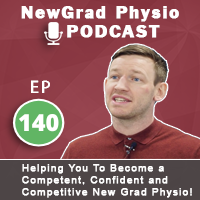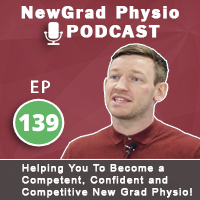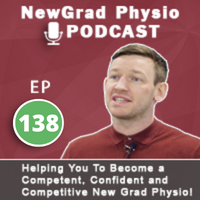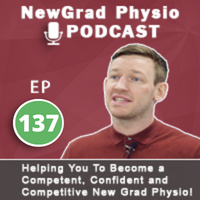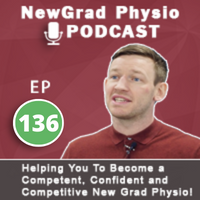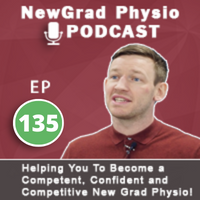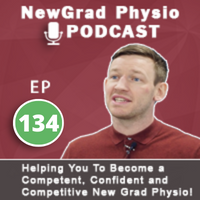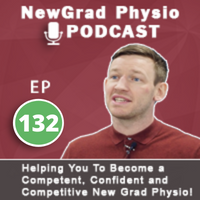
EPISODE 140 – New Grad Physio: ‘Making The Right Career Decisions’
Working out how to make the right career decision can be tough.
Do you start in the NHS and do your rotations…then decide which way to go?
Is this the right thing if you know you want to work in private practice or sport…
LISTEN NOW
EPISODE 139 – New Grad Physio: ‘How A Supermarket Conversation Changed My Career’
Sat in a supermarket cafe back in 2010 a short conversation as a new grad physio changed my career.
I’d just started working at the Leeds Rhinos, a job I had took straight from University.
I had skipped the usual academy and part-time roles to join full-time with the first team.
Things were great but…
LISTEN NOW
EPISODE 138 – New Grad Physio: ‘3 Must Do’s In Your Patient Assessment’
You do not need me to tell you how important your patient assessment is.
The assessment is at the start for a very good reason…
LISTEN NOW
EPISODE 137 – New Grad Physio: ‘Game-Changer For Diagnosing Knee Pain’
Assessing swelling during your knee pain assessments is something I am sure you already do…
But are you missing the main point of this simple assessment?
You might use tests like a patella sweep or patella tap test to assess for the presence of knee joint swelling…
LISTEN NOW
EPISODE 136 – New Grad Physio: ‘Treat With Your Head Not Your Heart’
The key to success with any patient is being able to clinically reason what you are doing.
It is being able to make sound judgements based on the findings of your clinical assessment and making the right call with a patient’s diagnosis and prognosis.
This can be hard as a new grad, especially if you are seeing injuries that you might not commonly see, or injuries that you have not had much experience with in the past.
The physio inside you always wants to give a positive spin on each and every injury you see, to give good news and a rosy prognosis…
LISTEN NOW
EPISODE 135 – New Grad Physio: ‘3 Simple Steps To A Great Initial Assessment’
Being able to clinically reason what you are doing in your patient assessments, treatments and rehab, is key to getting consistent patient results.
Without it…you are just guessing!
We talk about clinical reasoning ALL the time in the therapy world…
LISTEN NOW
EPISODE 134 – New Grad Physio: ‘The Guaranteed Way To F#*k Up Your Patients Treatment Plan’
Most therapists I speak to think they have a problem with their treatment and rehab programmes.
You think you need to learn more skills…
LISTEN NOW
EPISODE 133 – New Grad Physio: ‘The #1 Thing Patients (& Head Coaches) Hate’
I learnt this the hard way.
Earlier in my career working in sport this usually resulted in a barge of questions and shouting from an angry head coach…
LISTEN NOW
EPISODE 132 – New Grad Physio: ‘Taking The Fear Away With Neck Pain Patients’
Do you worry when your patient reports they have neck pain?
Anxious that you might miss something serious…
LISTEN NOW
View More Podcast Episodes
Apple Podcasts
Spotify Podcasts
Google Podcasts
Soundcloud Podcasts

